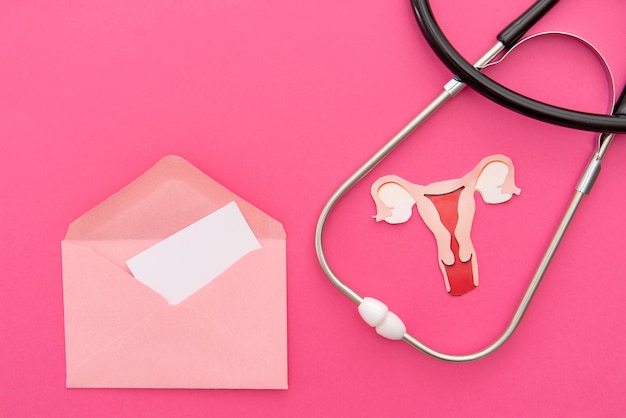Managing Endometriosis: Medical Options and Hormonal Therapies to Consider
Endometriosis is a complex disease that has considerable impact on the quality of life of those affected and that has no cure. It remains poorly understood.
Navigating the world of endometriosis can feel overwhelming, but understanding your medical options is the first step to taking control of your health. Endometriosis treatment often involves a combination of approaches tailored to relieve symptoms and improve quality of life. Among these, hormonal therapies play a crucial role, working to regulate or suppress the hormones driving the condition. From familiar medications to newer options, there’s a wide range of hormonal treatments for endometriosis designed to fit different lifestyles and preferences.
Let’s explore the medical options available, focusing on how hormonal therapies can be instrumental in endometriosis management. This blog is going to just focus on hormonal treatments during the reproductive years. Please read our other blog if you are interested in learning about endometriosis during the menopause https://blushclinic.ie/2025/01/23/what-happens-to-endometriosis-after-the-menopause/
Endometriosis treatment is a multifaceted approach aimed at managing symptoms and improving quality of life. Let’s explore the various medical options available, with a focus on hormonal therapies that play a crucial role in endometriosis management.
Exploring Medical Options
Endometriosis treatment encompasses a range of medical interventions designed to alleviate pain, reduce inflammation, and address fertility concerns. These options can be tailored to each patient’s specific needs and symptoms.
Pain management is often the first line of treatment. Over-the-counter nonsteroidal anti-inflammatory drugs (NSAIDs) like low dose ibuprofen or naproxen (Naprosyn or Galpharm) can help manage mild to moderate pain. For more severe cases, prescription pain medications such as higher dose ibuprofen or mefanamic acid might be necessary. Nonsteroidal anti-inflammatory drugs (NSAIDs) are frequently used in the medical treatment of endometriosis. They effectively relieve pain associated with this condition, especially dysmenorrhea (painful menstrual periods) NSAIDs reduce inflammation by inhibiting the production of prostaglandins, which cause pain and inflammation. However, it is important to note that NSAIDs only provide symptomatic relief and do not address the underlying cause of endometriosis.
Surgical interventions are sometimes recommended, especially when conservative treatments aren’t effective. Laparoscopic surgery can be used to remove endometrial tissue and scar tissue, potentially improving fertility and reducing pain.
For those seeking to preserve fertility, fertility treatments may be suggested. These can include assisted reproductive technologies like in vitro fertilization (IVF) or intrauterine insemination (IUI).
Hormonal Treatment for Endometriosis
Hormonal treatments are a cornerstone of endometriosis management. The goal of hormonal therapy is to suppress the menstrual cycle, create amenorrhea and, preferably, stop ovulation if that process is painful. Hormonal therapies are contraceptive and, therefore, are not appropriate for patients who are trying to conceive.
Hormonal suppression can be achieved with combined oestrogen–progestin contraceptives (cyclic or continuous, with the latter being more effective) as a tablet, ring or weekly patch.
Another option is progestin-only medications taken continuously (oral or injectable medications, subcutaneous implants or intrauterine devices). When taken in a long-term continuous fashion, progestins tend to thin the lining of the uterus which stops regular periods and lessens the chance for break-through bleeding or spotting and has similar activity against endometriosis lesions themselves.
Current guidelines consider both combined contraception and progestogen only as acceptable first-line options. A systemic review of progestins did not find that any one particular progestin drug had superiority over any others.
Gonadotropin-releasing hormone (GnRH) agonists and antagonists are stronger hormonal treatments that induce a temporary menopausal state. While effective, they’re typically used for short periods due to potential side effects.
Hormonal Therapies for Endometriosis

Hormonal therapies are a key component in managing endometriosis. They offer various benefits and come in different forms, allowing for personalised treatment plans.
Benefits of Hormonal Therapies
Hormonal therapies for endometriosis are considered the first-line treatment to improve endometriosis symptoms, to postpone surgery or to prevent post-surgical disease recurrence.
Pain reduction is a primary benefit of hormonal therapies. By regulating hormones, these treatments can decrease the inflammation and pain associated with endometriosis lesions.
Hormonal therapies can also help control menstrual symptoms. Many women experience lighter, less frequent, or even absent periods, which can provide relief from heavy bleeding and cramping.
Another advantage is the potential to slow the progression of endometriosis. By suppressing oestrogen production, hormonal treatments may help prevent the growth and spread of endometrial tissue outside the uterus.
A systematic review found that combined hormonal contraceptives (CHCs) and progestin-only contraceptives (POCs) are effective in alleviating endometriosis-related pain, including dysmenorrhea, pelvic pain, and dyspareunia (painful intercourse). Both CHCs and POCs have demonstrated a significant reduction in dysmenorrhea and an improvement in quality of life. However, there is not enough evidence to determine whether any Y.
Another systematic review specifically examined the use of combined hormonal contraceptives (CHCs) for treating endometriosis-related pain. The review concluded that CHC treatment is effective in alleviating dysmenorrhea, pelvic pain, and dyspareunia. Continuous administration of CHCs proved to be more beneficial than cyclic administration. However, the quality of the available data was deemed low, indicating a need for further high-quality studies to better understand the role of CHCs in managing endometriosis-related pain.
Progestins like dienogest, norethisterone, drospirenone and medroxyprogesterone acetate (MPA) have demonstrated effectiveness in alleviating pain associated with endometriosis. Progestins work by reducing estrogen levels, suppressing ovulation, and having anti-inflammatory and antiangiogenic effects on endometriotic lesions. This helps to alleviate pain and potentially reduce the size of endometriomas (cysts caused by endometriosis).
Types of Hormonal Therapies
There are several types of hormonal therapies available for endometriosis treatment, each with its own mechanism of action and considerations.
Combined oral contraceptives (COCs) and progestin only pills (POP) are often the first-line treatment.
COCs contain both estrogen and progestin, helping to regulate menstrual cycles and reduce pain. COCs can be taken continuously to eliminate periods altogether.
Progestin-only options include pills, injections, and intrauterine devices (IUDs). These work by thinning the uterine lining and can be effective in managing endometriosis symptoms.
Second line treatments are GnRH agonists and antagonists and aromatase inhibitors.
GnRH agonists and antagonists are more potent hormonal treatments. They work by suppressing ovarian function, creating a temporary menopausal state. While effective, they’re typically used for short periods due to potential side effects such as bone mass loss.
Aromatase inhibitors are sometimes used in combination with other hormonal treatments. They work by blocking the production of estrogen in the body, potentially slowing the growth of endometrial tissue.
Effective Endometriosis Management

Managing endometriosis effectively involves more than just medical treatments. A holistic approach that includes lifestyle modifications and close collaboration with healthcare professionals can lead to better outcomes.
Lifestyle and Dietary Considerations
Lifestyle changes can play a significant role in managing endometriosis symptoms and improving overall well-being. These modifications can complement medical treatments and help patients take an active role in their health.
Regular exercise has been shown to help manage endometriosis symptoms. Low-impact activities like yoga, swimming, or walking can help reduce pain and improve mood. It’s important to find a balance and listen to your body to avoid overexertion.
Dietary changes may also be beneficial. Some studies suggest that an anti-inflammatory diet rich in fruits, vegetables, and omega-3 fatty acids may help reduce endometriosis symptoms. Reducing intake of processed foods, red meat, and caffeine might also be helpful for some individuals.
There is some promising research showing benefit from GLP-1 agonists in reducing inflammation and pain associated with endometriosis, more studies are needed.
Stress management techniques such as meditation, deep breathing exercises, or mindfulness practices can help cope with the emotional and physical challenges of endometriosis. These practices can also contribute to better overall health and well-being.
Working with Healthcare Professionals
Collaborating closely with healthcare professionals is crucial for effective endometriosis management. A team approach can ensure comprehensive care and personalised treatment plans.
Regular check-ups with your gynecologist or endometriosis specialist are important. These visits allow for monitoring of symptoms, adjustment of treatments, and addressing any new concerns that may arise.
Open communication with your healthcare team is key. Be sure to discuss any changes in symptoms, side effects from treatments, or questions about your care plan. This information helps your providers make informed decisions about your treatment.
Consider seeking support from other specialists as needed. This might include pain management experts, fertility specialists, or mental health professionals to address various aspects of living with endometriosis.
“Endometriosis management is not one-size-fits-all. It’s about finding the right combination of treatments and lifestyle changes that work best for each individual patient.” – Dr. Jane Smith, Endometriosis Specialist
Remember, managing endometriosis is often a journey of trial and error. Be patient with the process and don’t hesitate to advocate for your needs as you work towards finding the most effective management strategy for you.




 Splash
Splash